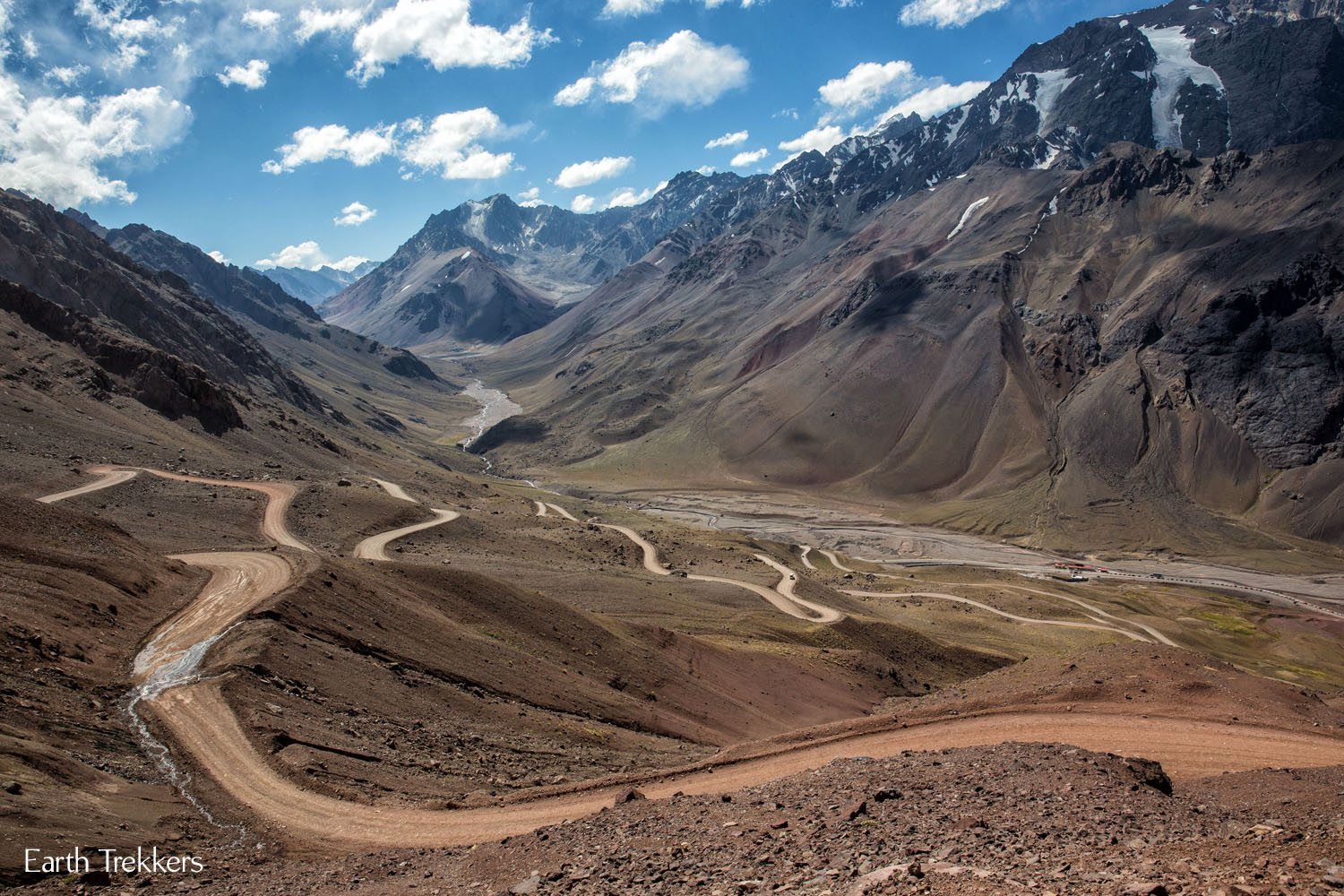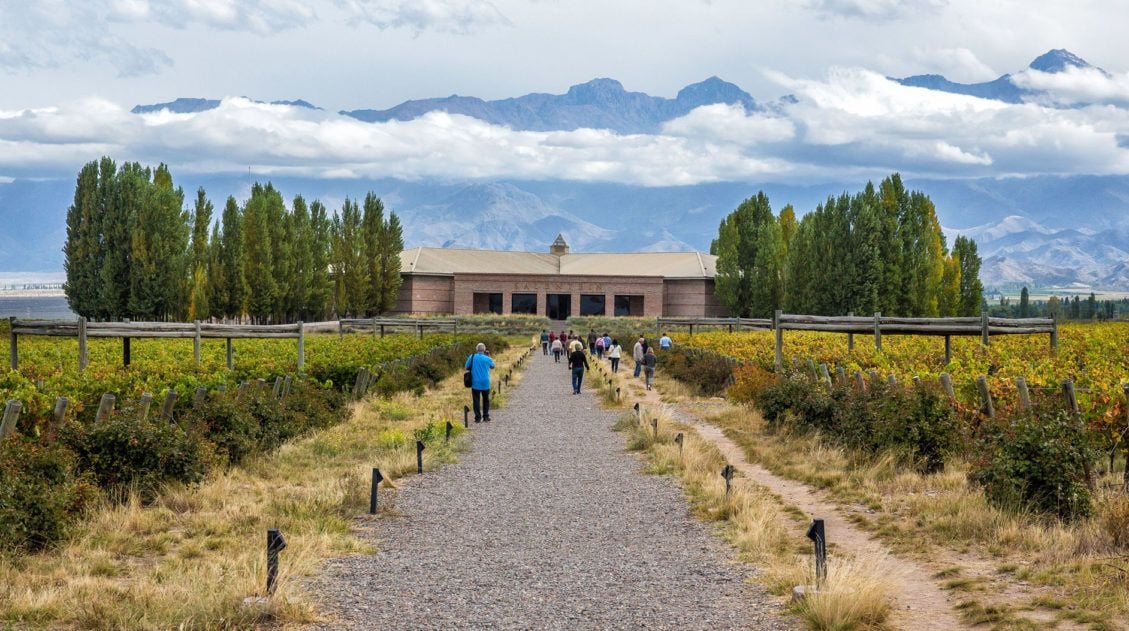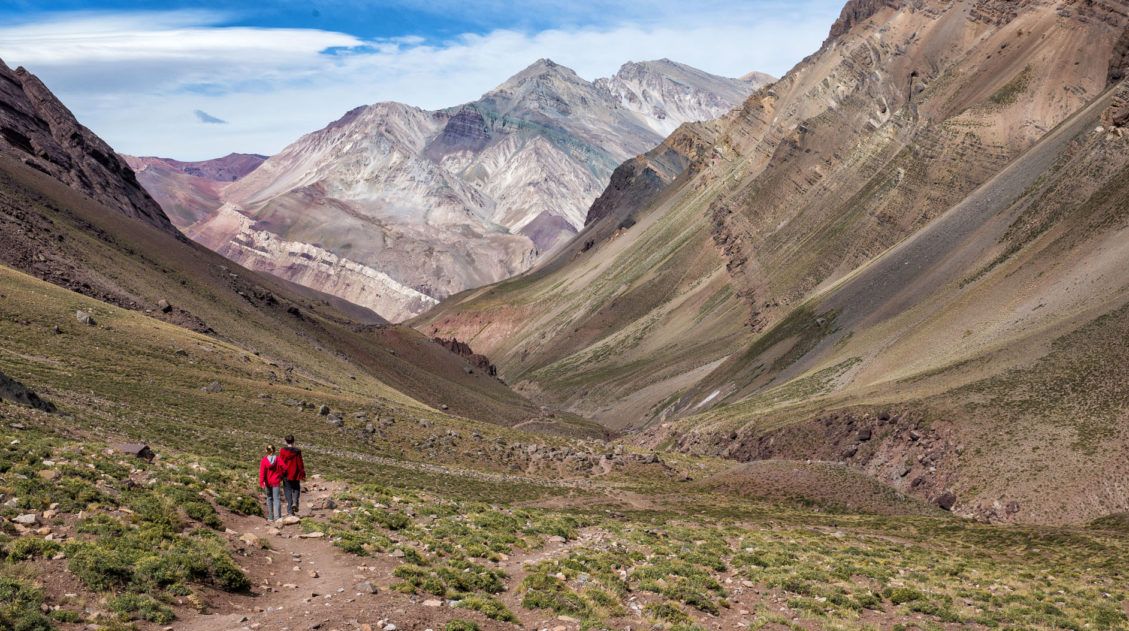Argentina Travel Guide
From the wondrous Andes Mountains and breathtaking Iguazu Falls, to the glacier-fed lakes of Patagonia and the lush wine regions of Mendoza, Argentina is an amazing place to experience South America’s outdoors and vibrant culture. Travel to Buenos Aires for a lively local experience of tango dancing, authentic cuisine, and rich history.
Argentina Stats
Official Language: Spanish
Population: 46 million
Capital City: Buenos Aires
Currency: Argentine Pesos
Power Outlet: Type C and I

Argentina and Chile Itinerary

12 Days in South America: Santiago, Chile and Mendoza, Argentina
From the vibrant city of Santiago Chile, travel across the Andes Mountains to the lush wine regions of Mendoza, Argentina on this adventurous twelve day itinerary.
Mendoza
9 Great Things To Do in Mendoza, Argentina
Many people travel to Mendoza, Argentina for the wine. Why not…Mendoza is one of South America’s premiere wine regions. But there is a lot more to do here than just taste wine, especially for those who love getting outdoors. With a location in the foothills of the Andes, there are numerous adventure activities for outdoor lovers. […]
Hiking to Confluencia, the First Aconcagua Base Camp
Mount Aconcagua is the tallest mountain in the world outside of Asia. At 6,962 meters (22,841 ft) it still does not come within the top 100 tallest mountains in the world!! All of these behemoths are located in the Himalayas, stretching from Pakistan to Nepal to China. Many people travel to Mendoza, Argentina, to go […]
Mendoza Itinerary: How Much Time Should You Spend Here?
How much time is the perfect amount to spend in Mendoza, Argentina? That depends on what you want to do. If you travel here only to tour the wine regions, a few days is all you need. If you want to add in adventure activities and day trips outside of Mendoza, more time is needed. […]
Mendoza Wine Region: How to Plan the Perfect Visit
The Mendoza wine region is hot right now! This is the fastest growing wine producing region in the world and it is Argentina’s most popular spot to travel to for wine tours and tastings. Located in the shadow of Mt Aconcagua, the vineyards in the Mendoza wine region are at one of the highest elevations in […]
White Water Rafting in Mendoza, Argentina
White water rafting in Mendoza, Argentina is one of the most popular adventure activities in this part of the country. We spent the morning with Potrerillos Explorer Rafting, one of the premiere rafting companies in Mendoza. We had a blast and this was one of our highlights of our recent trip to Argentina. White Water Rafting […]
The Andes Mountains
Driving to Cristo Redentor de los Andes
Cristo Redentor de los Andes (Christ the Redeemer of the Andes in English) is a statue of Jesus Christ that sits high in the Andes Mountains, straddling Chile and Argentina. Most people make the journey here for a view of the statue and for the awesome views of this part of the Andes. Cristo Redentor de […]
Hiking to Confluencia, the First Aconcagua Base Camp
Mount Aconcagua is the tallest mountain in the world outside of Asia. At 6,962 meters (22,841 ft) it still does not come within the top 100 tallest mountains in the world!! All of these behemoths are located in the Himalayas, stretching from Pakistan to Nepal to China. Many people travel to Mendoza, Argentina, to go […]
Top Experiences in Argentina
Buenos Aires: Buenos Aires is a bustling, vibrant city known for its delicious food, lively tango dancing, historical monuments, and colorful buildings. It’s one of the best places to learn about Argentina’s history, embrace local life, and experience Argentinian culture firsthand.
Bariloche: One of the most famous regions to visit in Patagonia is Bariloche and the Lake District. Towering mountains and glacier-fed lakes make this area perfect for sailing, hiking, and scenic drives. The city of Bariloche is a hiker’s paradise, known for its great restaurants, delicious chocolate, and cozy fondue spots.
Perito Moreno and Los Glaciares National Park: Part of the Southern Patagonian Icefield, Los Glaciares National Park boasts massive glaciers that are best seen by boat. The most popular glacier is Perito Moreno, renowned for its close proximity to visitors. Adventurous travelers can even hike on the ice with a tour group.
Ushuaia & Tierra del Fuego: Ushuaia is the southernmost town of Argentina, and is popular for its point of heading to Antarctica. One of the best things to do here is visit Tierra del Fuego National Park, an archipelago with jagged peaks, sapphire waters, and marine life. Sail down the Beagle Channel, walk with penguins, and hike through this dream-like landscape.
Iguazú Falls: Straddling the border of Brazil and Argentina is the largest system of waterfalls in the world, Iguazu Falls. Walking among these immense falls offers an awe-inspiring experience.
Drive the Ruta de los 7 Lagos: Ruta 40 runs up the entirety of Argentina, making it one of the longest roads in the world – and one of the most scenic drives in the country. This route will take drivers to incredible mountain vistas, through the Lake District, and to the Patagonia region. The portion between San Martin de los Andes and Villa La Angostura (known as the Ruta de los 7 Lagos) is the most popular stretch of this route, and is driveable in one day.
Mendoza: Mendoza is one of Argentina’s most popular wine regions. We enjoyed hopping between wineries to taste their various flavors, and we also loved Mendoza’s beautiful outdoor scenery. Impressive mountains rise above the region including the nearby Mt. Aconcagua, South America’s tallest mountain. Hiking, rock climbing, and white water rafting are great activities in this area.
Mt. Aconcagua: Mount Aconcagua is the tallest mountain in the world outside of Asia. Many people travel to Mendoza, Argentina, to go on mountaineering expeditions to summit Mt. Aconcagua (a journey that takes 18 to 20 days). For those who do not want to go mountaineering, there are shorter treks available to go hiking in the Andes mountains in Argentina. The shortest hike is the one day trek to Confluencia, the first Aconcagua base camp.
Best Time to Visit Argentina
Many recommend traveling to Argentina during the spring (September – November) or fall (March – May) for plenty of sunshine, warm days, and a well-rounded trip.
While this is true, if you are an avid hiker then traveling in the summer (December – March) may be the most accessible and warmest time as the snow has melted in higher-mountain regions like Patagonia. However, Buenos Aires becomes hot during this time.
Shoulder season is in the winter (June – August), when mountainous regions are covered in snow. This is a good time to visit Buenos Aires for cooler temperatures and less tourism.






